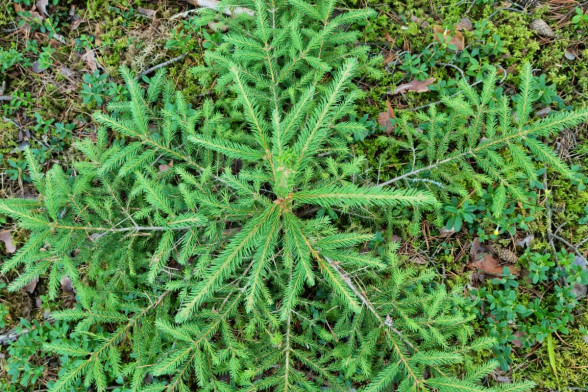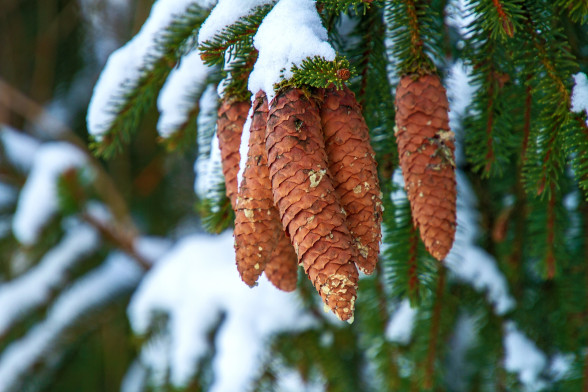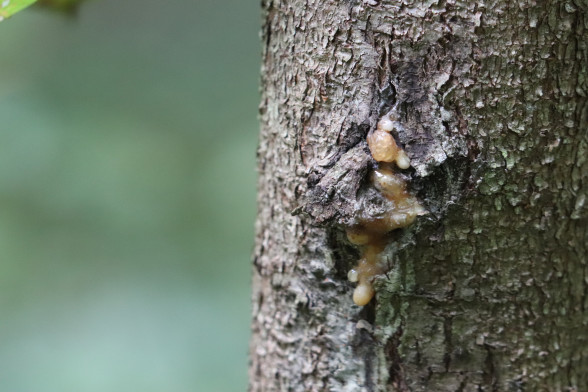
Spruce /Picea abies/
Spruce is an evergreen, large tree (up to 45 m tall) belonging to the pine family, with a lifespan reaching up to 300 years. It grows throughout Latvia, thriving in both pure and mixed stands in moderately fertile dry forest soils, as well as in moist, mainly mineral soils.
Spruce has a conical crown with spreading or slightly drooping branches. The bark is reddish-brown or gray, peeling off in reddish-brown to reddish-yellow strips. The needles are dark green, arranged singly, and the common spruce starts flowering at the age of 25-30 years. It has a shallow root system located in the upper soil layer. If spruce stands are not protected from the prevailing wind direction with other stands or border trees, they are often prone to windthrow.
Spruces bloom in May, and cones develop in the same year in October. Seeds burst in spring. Spruces thrive in nutrient-rich soils more than pines but poorly tolerate waterlogged conditions. The common spruce is notably shade-tolerant and can grow for a long time in the shade of other trees.
Interesting and important facts
People utilize spruce for various economic purposes. The large spruce logs are used in construction. Turpentine, obtained from spruce resin, serves as a raw material in the production of many other products. Spruce wood is valuable in the paper industry and as firewood. The needles are used for extracting essential oils, while the bark is utilized in tannin production. Additionally, young spruce saplings are decorated for Christmas.
Spruce trees are susceptible to damage by numerous insects and their larvae, primarily the spruce bark beetle and the spruce budworm.
Information sources: https://www.latvijasdaba.lv, Wikipedia, lvportals.lv
Photo: pixabay.com


